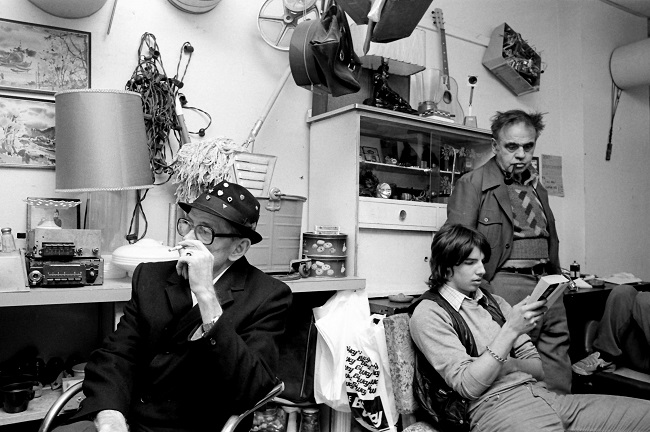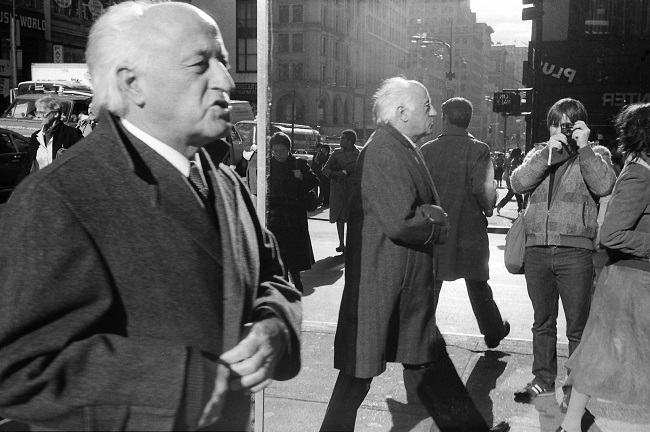We have been talking to Avard Woolaver for our sixteenth interview.

Crazy Joe’s flea market. Toronto 1983
Why photography?
I was inspired by my father, who took lots of snapshots. He photographed our family on trips, things like that; but he also made a point of photographing the hills around our farm, the fog, a sunrise. Everyday things. Looking back, I see that he had a good eye. So I think I absorbed, unconsciously, that this way of noticing was worthwhile and legitimate. Beauty as a concept wasn’t much talked about in our house, but his behaviour showed me that it mattered.
Cellphones?
No, not really. I use mine, but I’m not thrilled with the photos. I liked Get Smart when I was a kid. “Hey, mac, you’re shoe’s ringing.”
No one could have imagined then that the telephone could morph into a camera. I would like to get an old rotary telephone and tape a Leica to it. Real retro…
Digital versus film – still a topic?
I shot film for thirty years, and have done digital for ten. I miss the craft of processing and printing film, but don’t have the time or money these days. Digital has made me a better photographer, as I can take multiple shots until I get exactly what I want. I was far more stingy when shooting film. Many of my best photos were one-offs. I prefer analog sound; it’s more organic and natural, and also prefer the look of the silver halide. Yes, it’s still a topic.
Is equipment important?
Yes, it’s very important. On one hand, it’s said that the best camera is the one you have with you—whether it’s a cell phone or a view camera. There’s a lot of merit in that. But each camera and format is suited to its task; if Ansel Adams had used a Diana camera for his landscapes, well, I don’t think it would have worked out so well.
How did you learn to photograph?
At first, it was trial and error. When I first saw the photographs of Robert Frank and Lee Friedlander, I knew the direction I had to take. I learned a lot about the technical side while attending Ryerson and was influenced by my instructors and fellow students. Without that education and inspiration it would have taken me a lot longer.
Are photographs taken or made?
For me, they’re nearly always taken. I consider my work, at its core, to be documentary. (Always such a great question!)
Is photography art?
Yes, certainly. Thanks to trailblazers like Alfred Stieglitz and William Eggleston, photography was legitimized as an art form.
Where do you go to look at photographs?
I live in rural Nova Scotia; there aren’t a lot of good photo shows nearby. I go to Flickr or Facebook. I connect with a lot of photographers that way, and every day I get to see images that stun and surprise me. I’m old enough to know what a huge change that is, and I’m grateful every day. My inbox each morning feels like receiving a shipment of photography books. So great.
Who is it for—you or them?
It’s two-fold. I do it for myself, and yet I want to connect with people. It’s a path to connecting emotionally.

Fifth Avenue and East 36th Street. NY 1983
Avard’s recent conributions to aamora can be seen here and here.
He has recently published his first book, “Toronto Flashback (1980-1986) available on Blurb, and on Amazon